
Vitiligo in Apes
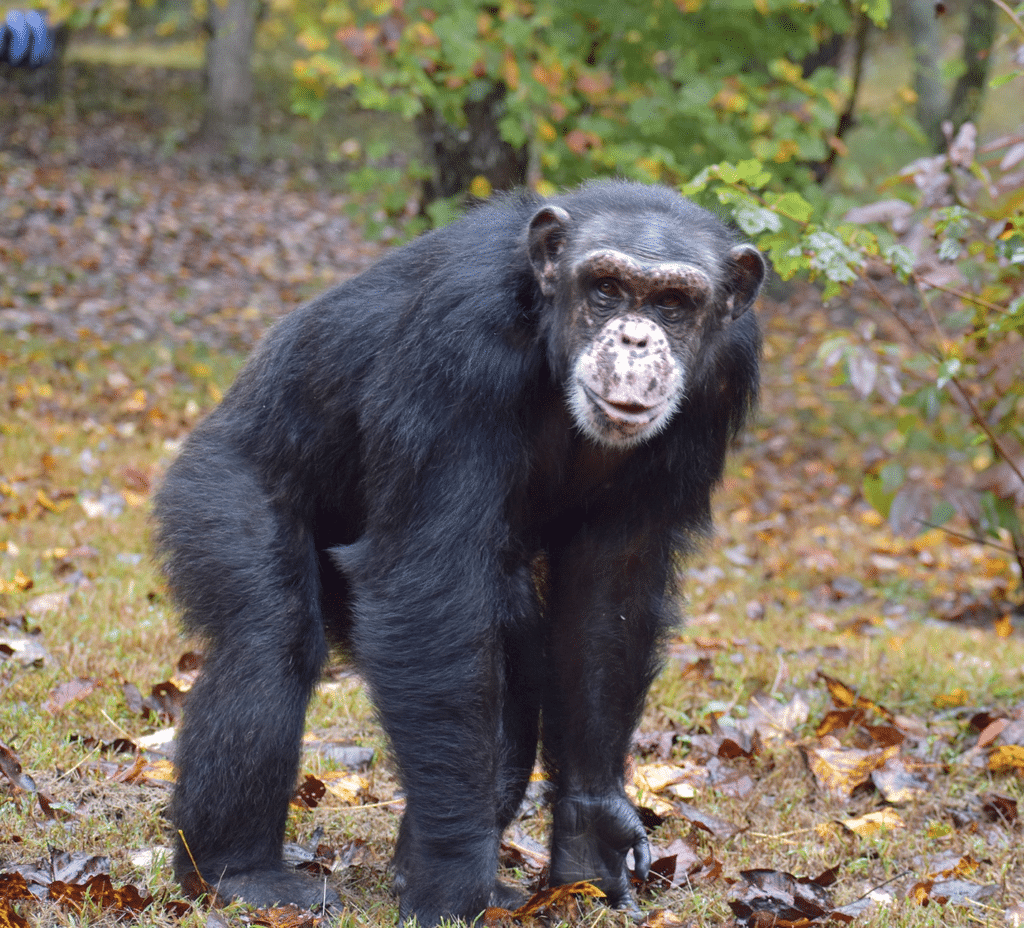
By Marissa Pena
If there’s one thing Project Chimps’ care staff knows about chimpanzees, it’s that no two chimps are exactly alike! Like humans, chimpanzees are individuals with their own personalities, food preferences, hobbies, and more. Some chimps even have favorite colors! At the sanctuary, getting to know each chimp is one of the most rewarding parts of ensuring their continued care.
Chimps aren’t just unique in personality; they have unique physical features too. Spotting these differences is an important part of caring for each chimp and something our care staff takes very seriously. But for one lucky chimp in her new home, blending in has never been an issue!
Meet Lucky from Project Chimps
Lucky was born to stand out, which is exactly how she likes it! She’s a playful and extroverted chimp who enjoys spending time with the other members of her group. She loves to explore the outdoor habitat and can often be spotted carrying around a pink blanket.
According to her caregivers, she’s also a huge foodie!
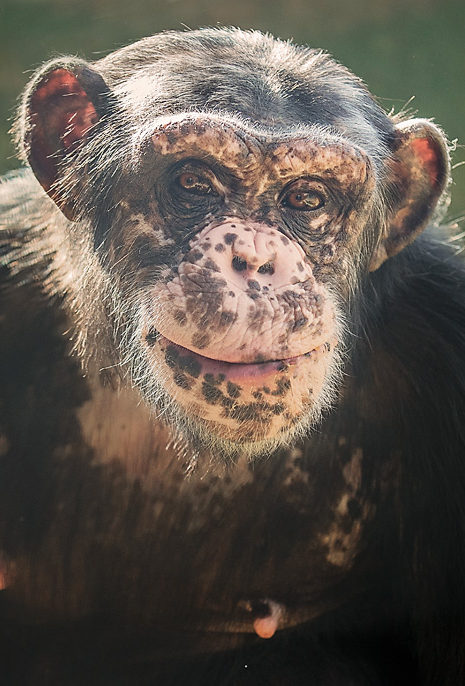
“Lucky’s favorite thing is food,” says Holly Lickteig, Manager of Husbandry. “One of the nicknames Care Staff has for her is ‘Piglet,’ because of her love of food and pink face. Chimps have a vocalization called a ‘food squeak’ when they’re excited about a food item, and every meal you can count on hearing Lucky’s happy food squeaks.”
She also dedicates a lot of energy into managing her relationships with her fellow chimps. Of her friendships, she’s probably closest to another female in her group, Chloe. They’ve been best friends even before their arrival at the sanctuary and are almost always together!
“Lucky is a really fun chimp to watch as she interacts with her group,” says Alyssa Newberry, South Yard Supervisor. “She’s a bit of a drama queen and tends to make choices that get her chased around by her more rambunctious groupmates. In particular, Kivuli seems to love messing with Lucky because she’s very loud and just a bit of a diva.”
“Lucky is also good friends with Panielle and will sometimes steal Panielle’s blanket to get her to play chase,” Holly adds. “Panielle is a very dominant female and Lucky is one of the only females she won’t always stand up to and seems to consider a friend.”
Vitiligo in Chimpanzees
Lucky is the only chimpanzee at Project Chimps with vitiligo, which causes some areas of her skin to appear lighter. Vitiligo is an autoimmune condition in which the immune system attacks color-producing cells in the body called melanocytes.
Vitiligo can sometimes increase the risk of certain medical conditions, including sunburns. Because the skin on Lucky’s face is lighter than other parts of her body, she’s more susceptible to sun damage. Our care staff makes sure to monitor her extra carefully after time in the sun just in case.
Lucky may be just one example of vitiligo in chimpanzees but she’s not the only one. Vitiligo has also been observed in dogs, cats, horses and even giraffes!
Meet Anaka from Zoo Atlanta
Vitiligo isn’t the only reason for differences in skin pigmentation, however. Anaka is a western lowland gorilla at Zoo Atlanta who went viral for the unique pink pigmentation on her fingers.
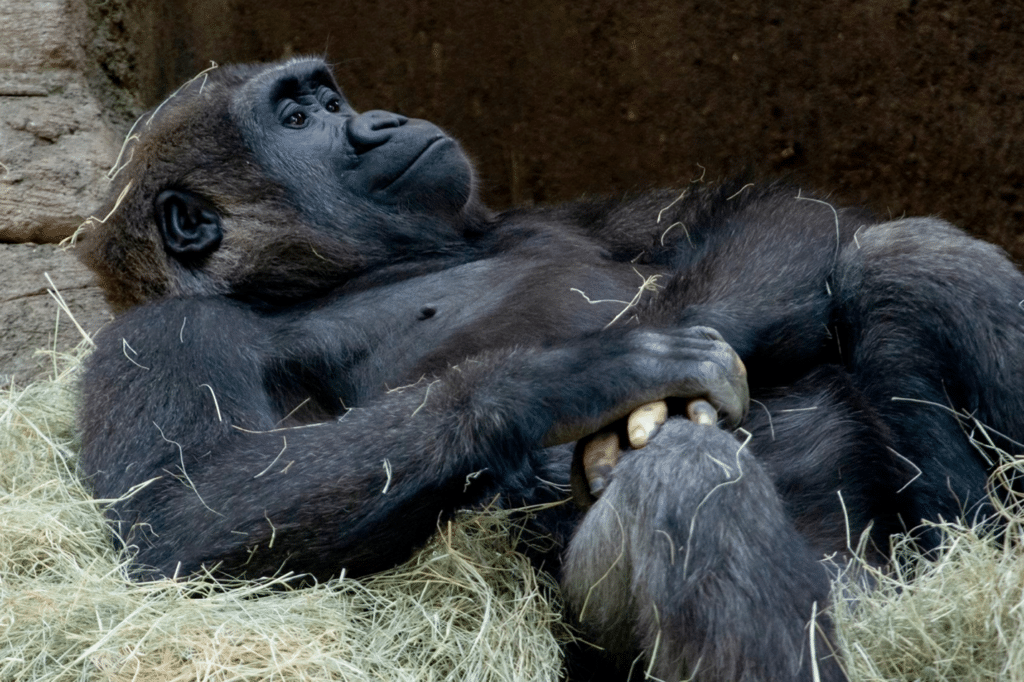
Jodi Carrigan is the Curator of Primates and has been working with primates for over 20 years. She also took care of the gorillas who lived at the sanctuary before Project Chimps was founded!
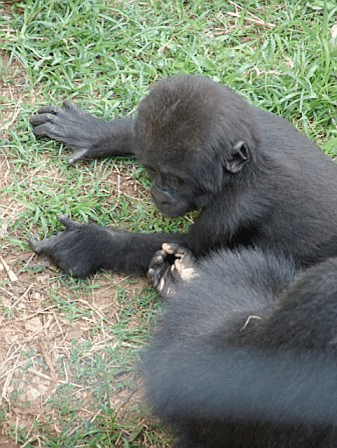
“The change in pigment is somewhat normal for newborn gorillas, particularly on the bottoms of their feet,” she explains. “I’ve seen it with most of the infants we’ve had here. The patterns vary; sometimes there are swirls, sometimes there are blotches, etc. There’s no certain time it fades but typically in their first year or two it will have changed.”
This wasn’t the case for Anaka, however! As the color remained, some guests started to wonder if it could be caused by vitiligo. However, Zoo Atlanta explained otherwise — the lighter pigmentation on her fingers was actually a unique birthmark!
Differences that make us Special
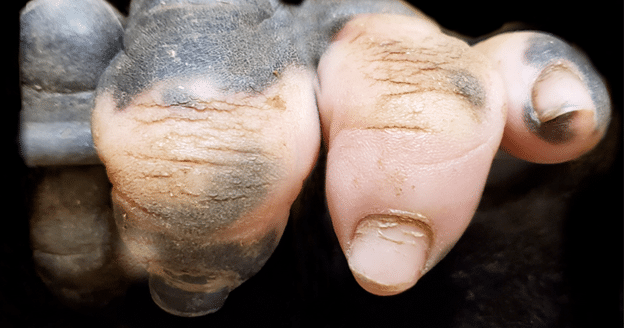
As humans, we don’t always consider just how much we have in common with other species. Physical differences don’t just make us unique, they also help us identify each other and coexist. Just as humans recognize our friends and family members by their eyes or sound of their voice, so do chimps!
Vitiligo in chimpanzees aside, even twin chimps have unique physical features that set them apart, and Lucky is no different! Whether it’s their size, freckles, skin tone or the shape of their ears, no two chimps are truly identical. A 2023 study found that chimpanzees and bonobos can even remember the faces of friends and family members for years.
Our differences make us unique, but if that’s all we focus on we might miss what we have in common. Like us, chimpanzees use facial expressions to show emotion, live in communities and construct tools to solve problems. Just as humans and chimps are capable of competition and greed, we’re also capable of empathy, altruism and compassion.
At Project Chimps, discovering what makes each resident unique is an important part of providing for their care. After spending so many years without a choice, giving them the freedom to choose how they want to spend each day is an important part of our mission to provide them with a forever home where they can thrive.
If you’d like to be part of our mission to support chimps like Lucky, please consider donating today!

